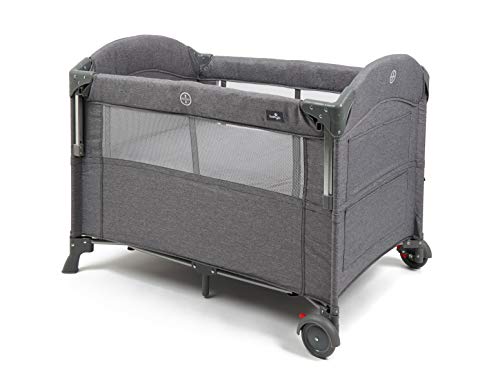
Best Infant Cribs
Add a reviewOverview
-
Founded Date September 18, 1935
-
Sectors Opportunities
-
Posted Jobs 0
-
Viewed 27
Company Description
Why Baby Cots Isn’t A Topic That People Are Interested In Baby Cots

The Essential Guide to Baby Cots in the UK
Choosing the best cot for a newborn can be a complicated task for new parents. With many alternatives offered in the UK market, comprehending the functions, safety requirements, and types of baby cots is important. This post intends to offer a helpful introduction of the numerous baby cots available, their advantages, and factors to consider for parents in the UK.

Kinds Of Baby Cots
There are several types of baby cots available in the UK, each developed to fulfill various requirements and choices. The most typical types consist of:
-
Standard Cots: These are standard baby cots that offer a safe sleeping environment for newborns and infants. They typically feature adjustable mattress heights to fit the baby’s development.
-
Convertible Cots: Also referred to as 3-in-1 or 4-in-1 cots, these flexible alternatives can transform from a cot to a young child bed and even into a full-size bed. They are created for prolonged usage, making them a cost-efficient option.
-
Moses Baskets: Ideal for the early months, Moses baskets are lightweight and portable, making them easy to move the home. They generally include a detachable cover and a soft bed mattress.
-
Travel Cots: These cots are foldable and compact, specifically developed for parents on the go. They come with a luggage for easy transportation and are perfect for slumber parties or holiday trips.
-
Co-Sleepers: These cots are designed to connect to the moms and dad’s bed, allowing for easy access to the baby throughout the night while making sure the child has their own safe sleeping space.
Table 1: Comparison of Baby Cot Types
| Type of Cot | Age Range | Mobility | Longevity | Price Range |
|---|---|---|---|---|
| Standard Cot | Birth to 2 years | Low | Moderate | ₤ 120 – ₤ 300 |
| Convertible Cot | Birth to 5+ years | Moderate | High | ₤ 150 – ₤ 500 |
| Moses Basket | Birth to 6 months | High | Low | ₤ 40 – ₤ 150 |
| Travel Cot | Birth to 3 years | Really High | Low | ₤ 50 – ₤ 200 |
| Co-Sleeper | Birth to 6 months | Moderate | Low | ₤ 100 – ₤ 300 |
Safety Standards for Baby Cots in the UK
Making sure the security of a baby cot is critical. In the UK, all cots should comply with particular guidelines to guarantee they are safe for usage. The following requirements need to be met:
-
British Standard BS EN 716: This basic sets requirements for the safety and efficiency of children’s cots and folding cots.
-
Material Safety: The cot ought to be made from non-toxic products that are devoid of harmful chemicals.
-
No Sharp Edges: Ensure there are no sharp edges or extending points that could damage the baby.
-
Stable Structure: The cot should have a steady base to prevent tipping, and the slats must be spaced properly to prevent the baby’s head from getting caught.
-
Bed mattress Fit: The mattress ought to fit comfortably in the small Cot beds, with no spaces that might present a suffocation risk.
Features to Consider When Choosing a Baby Cot
When selecting a baby cot, moms and dads need to keep the following features in mind:
-
Adjustable Mattress Heights: Cots with adjustable heights make it easier to place and raise the baby as they grow.
-
Material Quality: Look for sustainably sourced wood or materials that are both resilient and safe for infants.
-
Ease of Assembly: Cots that are simple to assemble and disassemble can save parents time and aggravation.
-
Storage Options: Some cots come with integrated storage drawers to keep baby essentials arranged.
-
Design and Aesthetic: Choose a cot style that fits well with the home decoration while guaranteeing it is functional and safe.
FAQs About Baby Cots in the UK
Q1: How much should I anticipate to invest on a baby cot?
A1: Prices for baby cots in the UK can vary commonly based upon type and brand, ranging from ₤ 40 for a basic Moses basket to over ₤ 500 for high-end convertible cots.
Q2: When can my baby transfer to a cot from a crib?
A2: Most babies shift to a cot in between 6 months and 2 years, depending upon their size and movement. It’s essential to monitor their developmental milestones.
Q3: Are second-hand cots safe to utilize?
A3: While pre-owned cots can be safe, guarantee they meet current security requirements and show no indications of wear, damage, or remembers. It’s advisable to prevent older models that may not adhere to existing regulations.
Q4: Can I utilize a cot for a co-sleeping plan?
A4: Co-sleeper cots are created particularly for this function, enabling you to keep your baby close while preserving a safe sleeping environment. Always stick to co-sleeping security suggestions.
Q5: What is the best bed mattress type for a baby cot?
A5: A company and flat bed mattress is recommended for babies. Prevent soft mattresses, as they increase the danger of suffocation. Ensure it fits comfortably in the cot with no spaces.
Selecting the best baby cot is a pivotal decision for new parents in the UK. It requires careful factor to consider of safety guidelines, types of cots readily available, and features that cater to their particular needs. By being knowledgeable, moms and dads can develop a safe and comfy sleeping environment for their babies, making sure peace of mind during those vital early months. Ultimately, investing time in research can cause an informed choice that stabilizes security, convenience, and functionality.
